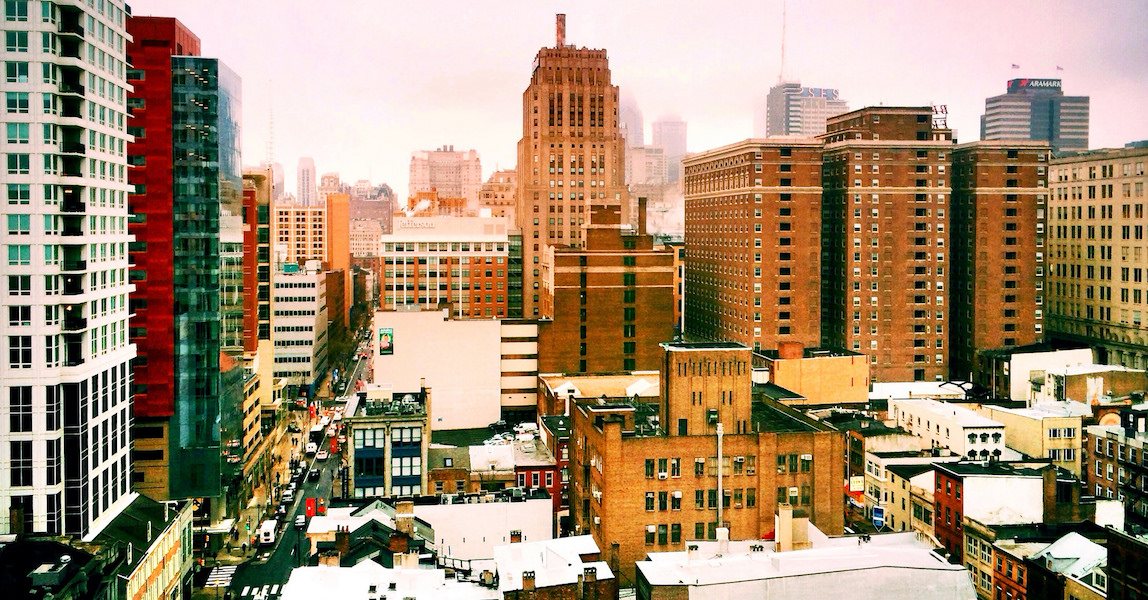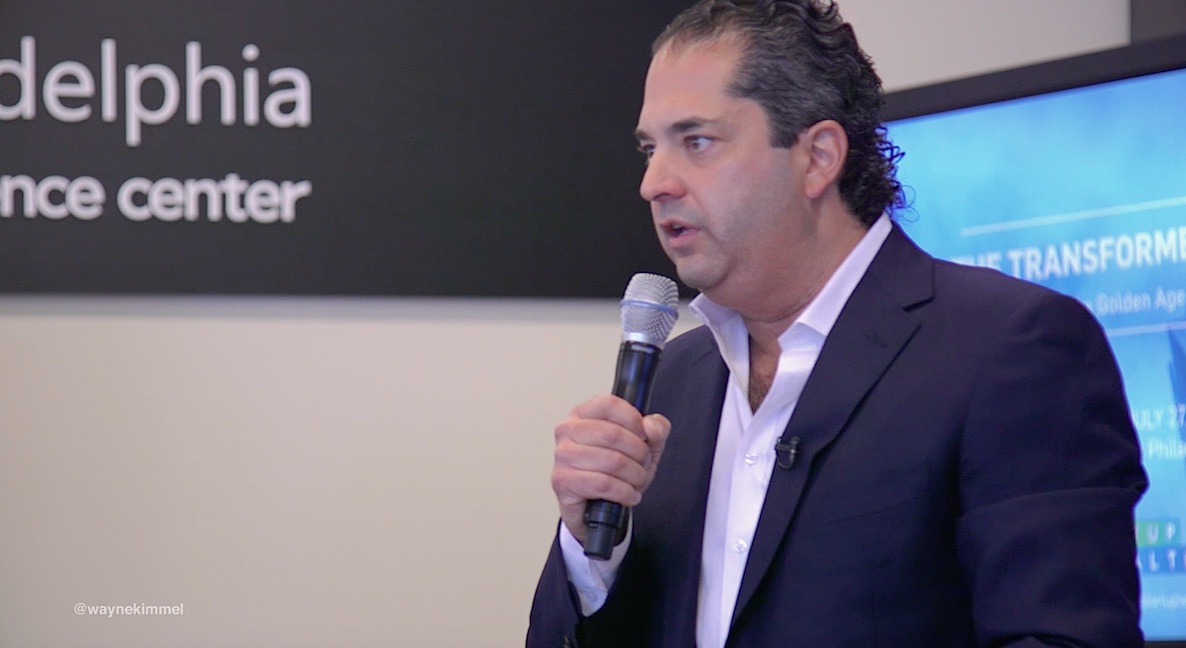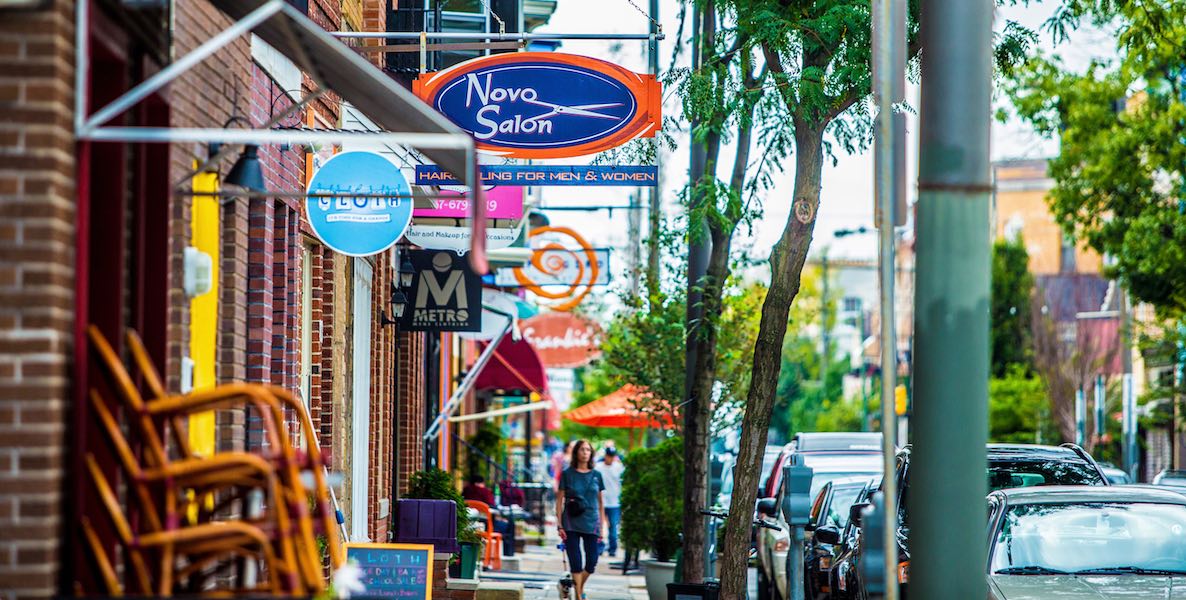When I moved to Philadelphia from Brooklyn almost a decade ago, one of my favorite things about the city was the diversity of its retail. Whereas every block in New York City seemed to have an alternating scheme of Duane Reade, Chase Bank and Starbucks, Philly had relatively little of that. Its commercial corridors were diverse, ranging from trying-hard-to-be-cool Passyunk Avenue, with its tiny organic general store and twee baby clothier, to not-really-trying stretches of 10th Street in Washington Square West, where a shabby used bookstore, hardware stores, barber shops and cafes all flourished. Chains in Center City were small and homegrown like Nuts to You, VILLA, Di Bruno Bros. and La Colombe.
While the city is growing slightly (about 5,000 people each year), now new construction abounds. On the one hand, Philly still retains a wealth of small local businesses. You could argue that Passyunk Ave and 10th Street, though different now, are better at meeting the needs of their community than before. And other avenues like West Girard and Frankford are more vibrant and less vacant than any time in recent history.
But on the other hand, you can see how precarious that independent vibe is. Large new construction in the city, such as the Dalian on the Park complex in Spring Garden, or 1919 Market Street, have ground retail that includes Santander Bank, Whole Foods, Naf Naf Grill, and two CVSs between them.
Why is it that when new, denser development comes in to neighborhoods, small local businesses give way to large national chains? All the remaining vibrant neighborhood commercial corridors in Philly hew to the Jane Jacobs vision of successful streets: They have small retail below one or two stories of residential. Unfortunately, it’s often not feasible to build this way in the 21st century amidst increasingly dense urban cores.
Capital is needed to level the playing field between national chains and small, local businesses, which could become profitable players in the city’s retail scene if given the opportunity. Imagine if Josh Koppelman, Wayne Kimmel and other local investors pooled together a few million dollars to guarantee local businesses’ leases, reducing the developer’s risk and essentially turning local businesses into competitive tenants.
Large spaces and exciting retail weren’t always mutually exclusive. To share just one anecdotal example: I remember growing up on the Upper West Side in New York, where the original, enormous Fairway supermarket had sawdust on the floor, while above it was a huge jazz dance gym with dancers whose silhouettes you could see from the sidewalk. Why doesn’t this formula for successful urbanism seem to work today as the retail space enlarges and 20 stories of residential sit atop it?
There are many reasons, but a few have to do with the traditional methods of financing development. Large scale new development is expensive and risky, and in return, developers want the highest paying tenant for their spaces—which is often a national chain. Often, they just want to move on their next project and don’t really care who rents the space. Plus, national chains validate their project; there’s an assumption that most people would prefer a Starbucks over a Last Drop Cafe on the ground floor of their condo.
But a big part of the problem is something called “credit tenant leasing,” which means that the financing of the development is structured around so-called “credit tenants.” To explain it in regular English, credit tenants are basically tenants with investment-grade credit scores. It is as good as guaranteed that they will pay their rent, month after month, year after year. The developers, in turn, use that rent to pay off the big loans they get to fund construction. How many small, local businesses can offer that? Very few.
To compensate, we need an organized form of venture capital for retail. Venture capital has done an amazing job of assuming risk to catapult great start ups to the scale at which they can compete with established businesses. And in some cases, venture capital has forgone immediate profit to make more money in the long term. Think of Amazon, which in many years has forgone posting a profit, since it makes huge investments in its operations and technology. In the same vein, capital is needed to level the playing field between national chains and small, local businesses, which could become profitable players in the city’s retail scene if given the opportunity.
Imagine if Josh Koppelman, Wayne Kimmel and other local investors pooled together a few million dollars to guarantee local businesses’ leases, reducing the developer’s risk and essentially turning local businesses into competitive tenants. For the return on that investment, perhaps the guarantors could get a cut of the development deal. To mitigate the risk, these financiers could use their investment savvy to assess which local businesses will become larger scale successes. This scheme would not provide the same financial reward as investing in the next online unicorn, but it could increase the inherent value of being headquartered in Philadelphia, improving the talent pool and value of their businesses. Or it could just be the right thing to do: Think of it like the Bailey Building & Loan, for the modern day city.
Such a solution would address the ability of mature businesses to scale up and fill the large retail spaces that are common to new developments. But it wouldn’t solve the dwindling source of small retail that naturally suits local businesses.
In Philadelphia, we have zoned most of our residential areas to be built at townhouse scale without provision for, or requirement of, retail on corners—despite the fact that up until about 50 years ago, most corners in residential neighborhoods featured stores of some kind or another. Look at the new townhouses going up in former parking lots in Center City, at the abundance of new construction in No Libs and Fishtown. Now try to spot the new retail that’s part of those developments—can you find it? It’s exceedingly rare.
Other cities, like Washington, D.C. used to have a wealth of neighborhood retail that slowly but surely was outlawed or converted to residential units (for a sense of the scope, see this Tumblr of former retail spaces). D.C. recognized this problem and put corner stores back into the zoning code just last year. In Philly ,the current zoning for most new development essentially has two options: single family or large-scale building. It’s hard to imagine developers swapping out a corner townhome for a corner store, but retail could be a natural part of a project that featured four or five stories of apartments. But that type of planning hasn’t happened organically, and developers seem disinclined to take that extra effort.
Philadelphia needs to host a much larger, city-wide conversation about this particular moment in our development cycle. There are so many ways we can leverage development to catapult Philadelphia into a new category of desirability and equity—but there are also so many ways we could squander this moment.
All of this points to the fact that Philadelphia needs to host a much larger, city-wide conversation about this particular moment in our development cycle. We are seeing more development, at a scale and at a pace, than we have seen in the past decade. There are so many ways we can leverage this investment to catapult Philadelphia into a new category of desirability and equity—but there are also so many ways we could squander this moment.
A new report shows just how strong retail demand is in Center City, suggesting that stores that got priced out of Walnut Street, might end up getting priced out of Chestnut Street too (as an example, see the closure of longtime local clothing store, Knit Wit, for a national chain, Just Salad). More than 45 national retailers have opened shop in Philly since 2013. Do we really want Rittenhouse Square to feel like an extension of the King of Prussia Mall? Is that the fate we’re accepting for Market East, which from 12th Street down to the end of the new Gallery shops at 8th Street, will be nothing more than a glorified urban mall?
Debating the character of development can feel like small ball, but it actually points to a broader existential question of how we want to exist in real time, in real space, with real people—a problem I didn’t dream would become so important in my lifetime. The other day, I was arguing with a friend about how people can’t put away their phones and simply enjoy being present in the world anymore. They have to photograph it, they have to check something. They can’t merely be, look around, experience the city. My friend replied that real life can often be disappointing. And I kind of knew what he meant.
I remember growing up in Manhattan where neighborhoods like Alphabet City and the West Village teemed with cafes, vintage clothing stores, record shops, bookstores, and imported good stores that featured unique merchandise that you could get lost in for hours. In New York, that only exists in tiny doses now—and what a shame. Real life will only become more disappointing if cities are just a bunch of chain stores with things, places and people you could find anywhere, especially online. In Philly, we still have a great foundation of authentic retail. Let’s make sure not to lose it.
Be sure to shop local this weekend during Small Business Saturday | Photo by J. Fusco for Visit Philadelphia





